Central America
The following etchings reference two sojourns to Central America in 1986 and 1992. On the second trip I also briefly visited Cuba in November after being in Nicaragua in October at the time of the 500th anniversary of when Columbus unfortunately discovered the Americas.
- tikal. guatemalan postcard. (L)
- festival bluefields (L)
- guatemalan couple (S)
- nicaraguan boy (L)
- schoolhouse.solentiname. lake managua (L)
- fiesta (M. N/A)
- voodoo cross. havana. (M. N/A)
- the melbourne cup was raced on the mexican day of the dead (M)
S small M medium L large XL extra large N/A not available nic_nicola50@hotmail.com
________________________________________________________________________________________________________________
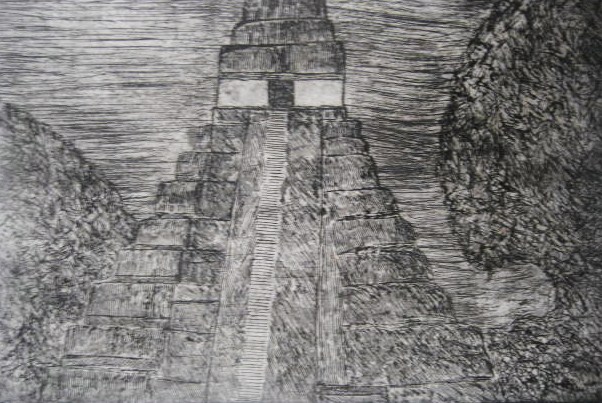
16 ‘Tikal. Guatemalan Postcard.’ B&W. 5.5”X8”. zinc plate. Guatemala. L
This image is based on a postcard of Tikal I purchased on my second trip to Guatemala in 1992. I visited Tikal in 1985 and being in Guatemala in the mid-eighties was a strange affair as it was a period of severe oppression for the Mayans. Yet wherever you went as a tourist there was a sordid ‘magic realism’ to the way such injustice was cunningly kept out of view. There was a civil war with leftist rebels but it always seemed to be happening ‘somewhere else’; if you were not aware of how vicious things really were, the occasional sightings of army trucks dropping off soldiers – the ‘upholders of national security’ - going into the jungle from the road to out-of-the-way indigenous villages would have been noted as a mere routine ‘army exercise’ - with no malicious intent. While in reality thousands were being slaughtered by the military. Thus, in response I found myself involved in solidarity work for Central America for several years.
At first I hesitated to put this photo in as it shows me and a friend in jovial mood at Tikal and such a photo maybe considered insensitive when one considers the above text. However, wih the above context in mind it does typify how the Guatemalan military would have liked the 'gringos' to respond to their beautiful, grand country. I must admit that as Tikal was the first Guatemalan travel destination that I reached - with an English companion Julie - I was somewhat unaware of the extent of the infernal internal political situation. Nevertheless, I do remember feeling a little mystified by the sight of army soldiers I saw marauding through the jungle just beyond the perimeter of this archeological site. I did not think Tikal would need so much security. 'Picture postcard' Guatemala, indeed. Notice the little touristy palm huts in the background, the sort one would expect to find on some Pacific island beach resort. Ignorance is Strength stated George Orwell and a little bit of subtle 'ideological camouflage' in the surrounding terrain helps to encourage such mental blindness. By the way, the other fellow traveller in the photo is also named Julie who is Australian.
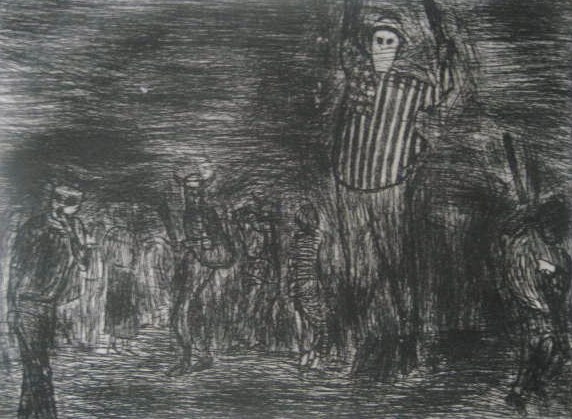
17 ‘Festival. Bluefields.’ B &W. 8” X 6”. zinc plate.
‘...devils were running down the muddy street. The heavy rain was not deterring them. Intrigued by the gradually increasing numbers of demons I walked down to the main intersection of Bluefields. Many young men were dressed as old women wearing dresses that came down to their feet and sprawling over large padded behinds. These men were also wearing colourful face masks and carrying long sticks in their hands. From the intersection the road inclined gradually until it reached the market sheds which were beside the wharves. To the right on this last stretch of the road was a restaurant bar which was filled with ‘old women’ and blaring Carib music. A crowd of spectators was building up and hovering over Bluefields was a grey sky spitting water drops. I stood beside the women selling bread on a corner and watched the ‘old women’ who were coming out of the shop. They were running up to the young girls in the crowd and hitting them with their sticks. Amongst these ‘old women’ was the one wearing the dress of the U.S. flag. The crowd, filled with trumpeters, drummers and men shooting off skyrockets which they were holding in their hands, started to venture down past the wooden buildings of the main street of Bluefields. I looked over from where I stood beside the restaurant bar and noticed the lone ‘old woman’ who was tightly gripping his stick and standing to one side of the large stone warehouse which was behind him. Along the front of the warehouse was the name SOMOZA with the part of where the Z of the stone lettering broken away. I thought of the ex-dictator, of the past contra war and of the old woman whose body was covered by the United States flag and who had resumed striking several spectators...’ *
* Short story excerpt by the artist.
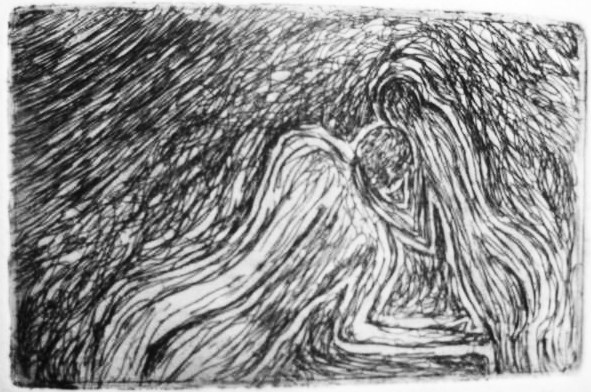
18 ‘Guatemalan Couple.’ B&W. 4.5” X 3”. zinc plate. Guatemala. 1985. S
An alternative title for this image is Guatemalan Embrace. This is a work based on a small painting in the rustic room of a hostel in Guatemala City which - for purely monetary reasons - also doubled up as a brothel.
Top left: Leaflet for Nicaraguan benefit at Balmain Town Hall. 1989. Below left: Mural of Nicaraguan national hero Augusto Sandino who fought the invading U.S. marines in the thirties. To left: An anti-U.S. mural attacking U.S imperialism in the eighties. Bottom right: On the lamp post is a memorial to a victim to Somoza’s forces when Nicaragua was liberated from the dictatorship in 1979. Thousands died in the street fighting in Managua and many memorial plaques were placed where the slain actually fell.
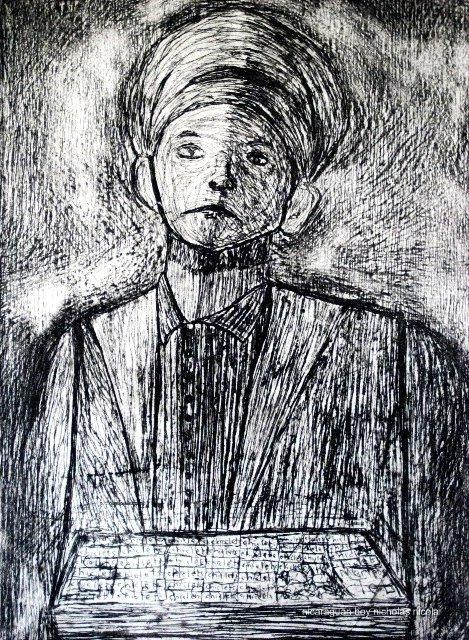
19 ‘Nicaraguan Boy.’ B&W. 8” X 6”. zinc plate. Nicaragua. L
This image is based on a common scene which I saw during my second visit to Nicaragua: the beggar child selling chewing gum, cigarette lighters or other such small product. Having been to Nicaragua in 1986 when the Sandinistas were at the zenith of their power you could sense the empowerment of a whole nation which had overcome the Somoza dictatorship. Though the contra war was taking a great toll on human life there was a sense that this bloody trial would be overcome and an everlasting peace would soon be achieved. In 1992 a peace of sorts had been achieved but it had come at the cost of a war weary population voting out the Sandinistas in order to end a conflict which had taken the lives of 10,000 innocent people. However, Nicaraguans were no longer in control of their lives having to face up once more to the usual ills of third world impoverishment. This is a melancholy portrait of a young boy struggling through his day; yet I hope - through the iconoclastic quality which I have given the work - that I have instilled him with a sense of dignity which he and his people deserve.
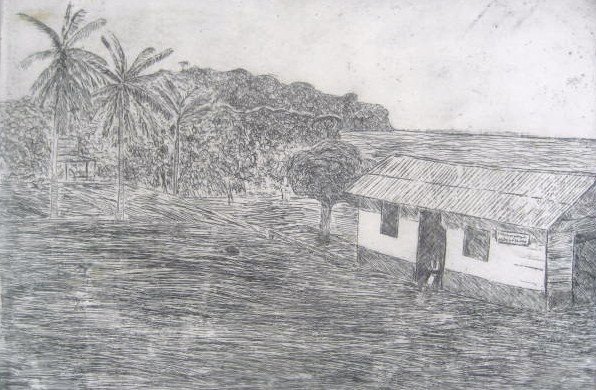
20 ‘Schoolhouse. Solentiname. Lake Managua.’
B&W. 10” X 6.5”. zinc plate. Nicaragua. L


Typical Nicaraguan 'naive' peasant painting that could be from Solentiname. Such artworks were used on a series of NICARAGUA MUST SURVIVE postcards from England.
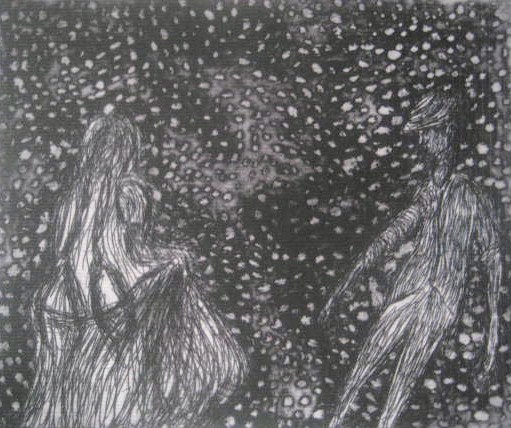
21 ‘Fiesta.’ black on grey paper. zinc. 5” X 6”. El Salvador. M. N/A.
In
1.Interestingly enough these ‘companeros-in-arms’ still only knew their friend by his cover name which was Raul.
Salsa band at celebration of FMLN election victory in El Salvador. March. 2009. Addison Road Community Centre. Marrickville. Sydney. Unfortanetly I do not have the name of this rather charismatic band as they played very vibrant, good, life enhancing pulsating music (Yes, I cannot adorn these excellent musicians with enough superlatives).
22 ‘Voodoo Cross. Havana.’ B&W. 6”X7”. zinc plate. Cuba. M. N/A.
‘An Afro-Cuban man asks me for the time; I give it and then end up in his place. A blackout, so candles are lit. The darkness illuminates this tall, wiry man with the flat-top haircut who speaks Creole English, taught to him by his great-aunt. Thus the family does not understand what is being said, the wife the grandparents walk about, prepare dinner. It feels like sitting on a dream stage as the host explains it is his daughter’s birthday; she is turning one, shares it with Havana’s own founding day. In this inextricable way the destiny of a city is seen in the fortunes of a child. He needs help to organise a party. The monthly ration books do not offer enough provisions. The grandmother chooses to show the voodoo dolls behind a door. Black market rum. A black market cake are stealthily organised during the week. Socks with wings for the birthday girl are bought at a U.S. dollar shop. At last in the alleyway outside the house the party proceeds with the neighbourhood children. The neighbourhood gossip asks: is the stranger an angel from heaven? A boat piñata is smashed. A shower of sweets and presents. Reggae music, dancing, voodoo rituals in the late evening,( including touching a wooden cross in a glass of water, surrounded by other glasses of water a fingertip dipped into each one then touching the cross; placing an ash cross on the father’s forehead). The smiling father with his wife beside him proudly holds up his baby birthday girl. Her winged socks a brilliant white. A Caribbean Holy Family.’
*Short story excerpt by the artist.
23 ‘The Melbourne Cup was raced on the Mexican Day of the
Dead.’ B&W. 8” X 5”. zinc plate. M
I was inspired to do this image when I heard on November 1 a racing commentator confidently state that the whole world’s attention was on Australia’s ‘nation-stopping’ race. I knew in Mexico that on this particular day people had another festivity foremost on their minds. The musicians with the skull heads are based on colourful cut-out designs that are familiarly used on skeleton sugar dolls that are also made for the Day of the Dead.
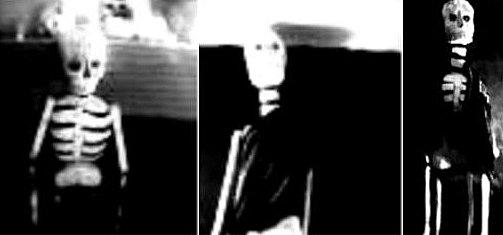
Three Mexican sugar skeletons at a Dance of the Dead party in the Latin American Hut at Addison Grounds Marrickville.
________________________________________________________________________________________________________________
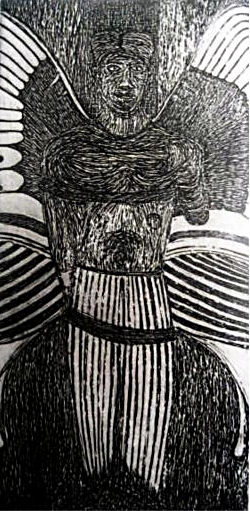
Macandel. Haitian resistance leader. Noted in this section as this etching references Latin America. Full details in Part 6.
_______________________________________________________________________________________________________________
The following two solarisation photos are by the highly esteemed photographer Louise Kelly-Hope taken at Managua on October 12, 1992. The 500th Anniversary of the discovery of the Americas by Christopher Columbus; a cataclysmic event for the locals.
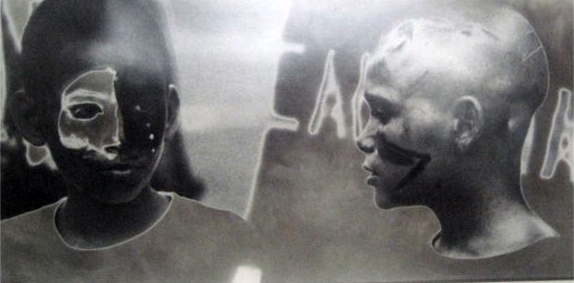
_______________________________________________________________________________________________________________